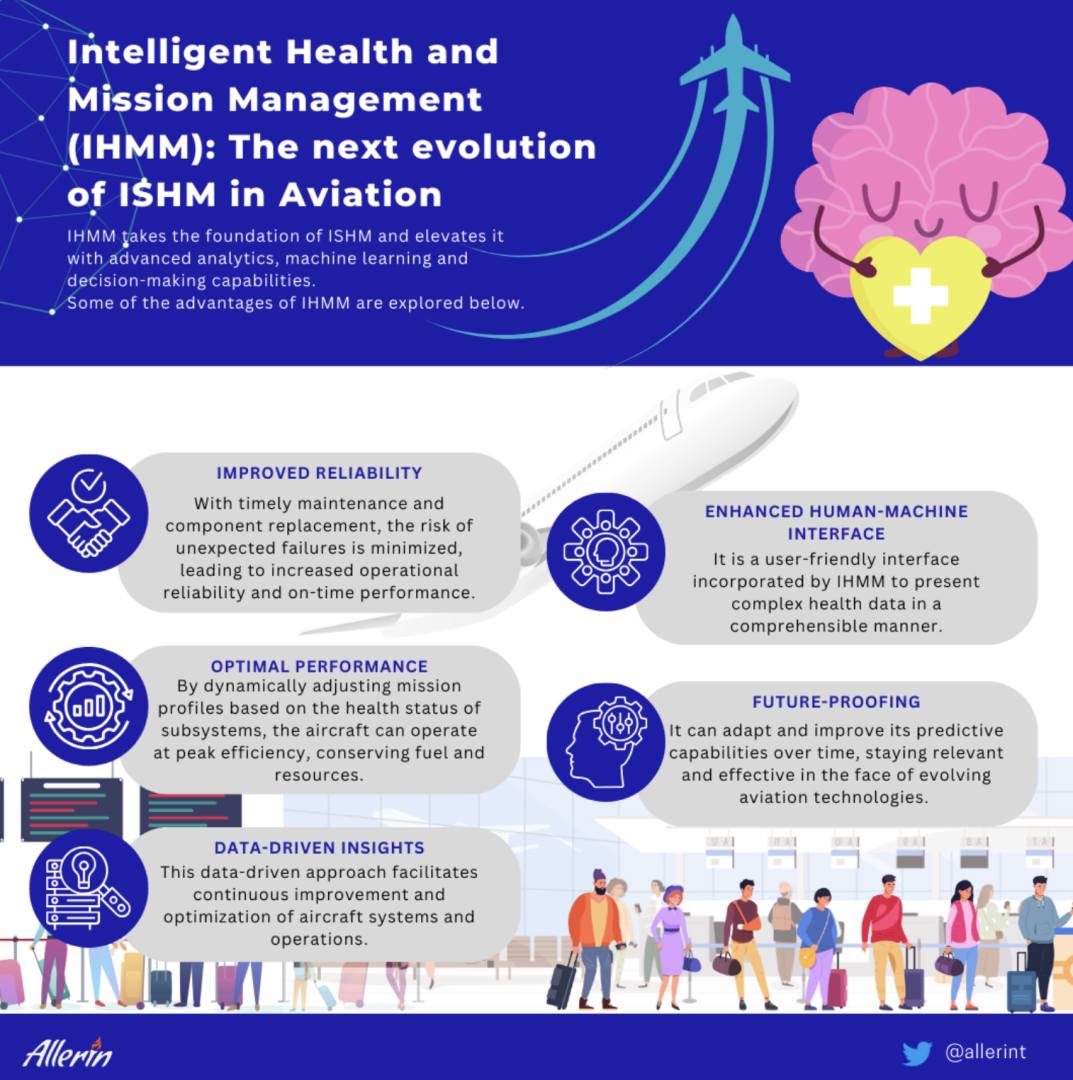
Intelligent Health and Mission Management (IHMM): The next evolution of ISHM in Aviation
IHMM, the next evolution of Integrated System Health Management, is set to revolutionize the aviation industry.
Its advanced features and informed decision-making capabilities promise significant advancements. It can reduce human intervention and improve the overall performance of aircrafts.
Aviation is an indispensable mode of transportation that connects people and places across the globe. Ensuring safety and efficiency is paramount with the ever-increasing complexity of aircraft systems. That’s where Integrated System Health Management (ISHM) steps in as a game changer. In the aviation industry, ISHM refers to a comprehensive and integrated approach to monitoring, assessing, and managing the health and performance of various aircraft systems in real-time. It involves using advanced technologies, data analysis and predictive algorithms to ensure aircraft operations' safety, reliability and efficiency.
As technology advances, ISHM has evolved further, leading to Intelligent Health and Mission Management (IHMM). IHMM takes the foundation of ISHM and elevates it with advanced analytics, machine learning and decision-making capabilities. Some of the advantages of IHMM are explored below.
Advantages of IHMM: The Next Evolution of Integrated System Health Management
IHMM represents a cutting-edge advancement in aviation, enabling real-time system health predictions that modify mission profiles to ensure safety, reliability, and efficiency. IHMM's emphasis on predictive integrity is particularly crucial for Trusted Autonomous Systems (TAS) applications, where accurate assessments of the current and future system state of health are vital for flight safety. IHMM empowers operators to maintain operational capability and prevent failure events with or without human intervention by predicting subsystem degradation and enabling dynamic restorative or reconfiguration actions. Other advantages of IHMM include:

1. Improved Reliability
By continuously assessing the health of aircraft systems, IHMM enhances the overall reliability of the aircraft. With timely maintenance and component replacement, the risk of unexpected failures is minimized, leading to increased operational reliability and on-time performance.
2. Optimal Performance
Real-time monitoring and predictive capabilities of IHMM enable operators to optimize aircraft performance during missions. By dynamically adjusting mission profiles based on the health status of subsystems, the aircraft can operate at peak efficiency, conserving fuel and resources.
3. Data-Driven Insights
IHMM generates vast amounts of data from various sensors and subsystems, which can be analyzed to gain valuable insights into system performance and health trends. This data-driven approach facilitates continuous improvement and optimization of aircraft systems and operations.
4. Enhanced Human-Machine Interface
Enhanced Human-Machine Interface (HMI) is one of the critical advantages of IHMM. It is a user-friendly interface incorporated by IHMM to present complex health data in a comprehensible manner. This empowers operators and maintenance personnel to interpret and act on the information effectively, enhancing decision-making processes.
5. Future-Proofing
As IHMM is built on advanced technologies like data analytics and artificial intelligence, it is inherently future-proof. It can adapt and improve its predictive capabilities over time, staying relevant and effective in the face of evolving aviation technologies. Integrated System Health Management in aviation has evolved from basic fault detection to the comprehensive and intelligent framework, IHMM. With advancements in data analytics, artificial intelligence, and machine learning, IHMM has revolutionized aircraft safety measures and performance. As technology continues to advance, the future of aviation will undoubtedly be shaped by further innovations in ISHM, reinforcing its role as a fundamental pillar of modern aviation.
Trending
-
1 How Does SaaS Differ From IaaS And PaaS?
Fabrice Beaux -
2 Single Page Applications vs Multi-Page Applications
Fabrice Beaux -
3 Top 7 Effective Strategies for Multi-Language Website Development
Fabrice Beaux -
4 Boost Engagement to Infinity and Beyond: Unleashing AI-Driven Support
Anas Bouargane -
5 The Cheapest And Most Beautiful Stickers in CS2
Daniel Hall





Comments